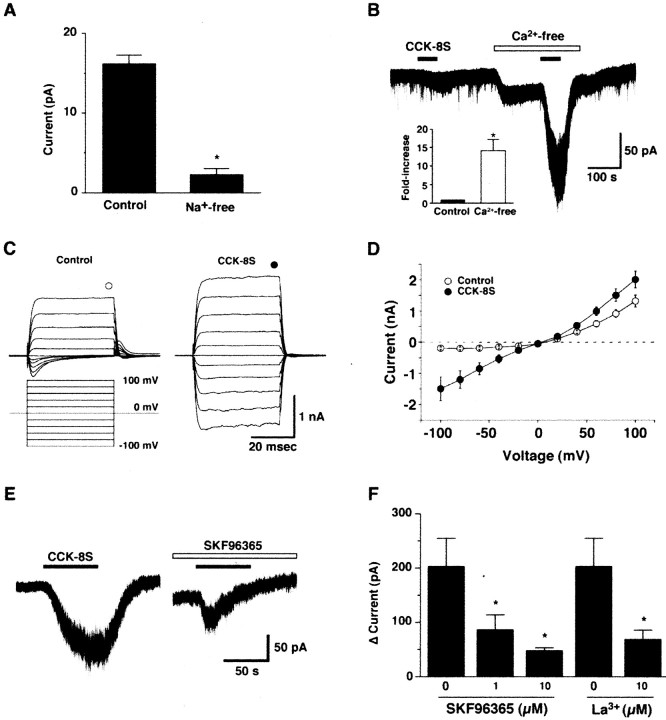Figure 7.
A, The effect of extracellular Na+ on the CCK-8S-induced inward current. NaCl was replaced by an equimolar concentration of choline chloride in the presence of TTX (1 μm). CCK-8S (10 nm)-induced inward current was dramatically decreased in the Na+-free solution (n = 7). B, The effect of extracellular Ca2+ on the CCK-8S-induced inward current. CCK-8S (5 nm) induced weak inward current in the presence of extracellular calcium concentration. This inward current was dramatically increased in the Ca2+-free solution (n = 7). The bar graph in B shows a fold increase in inward current in the Ca2+-free solution. C, D, The current-voltage relationship obtained by voltage step protocol using a CsCl pipette in the Ca2+-free extracellular solution. The steady-state current, at the end of the voltage step (marked by circle in C), is plotted in current-voltage relationship. I-V curve shows that the reversal potential of the CCK-8S (100 nm)-induced current was -2.3 ± 2.1 mV (n = 5). Neurons were voltage clamped at 0 mV for 2 s, and the membrane potential was stepped from -100 to +100 mV with an increment of 20 mV at a duration of 40 ms. Open circles indicate control, and filled circles indicate CCK-8S (100 nm) application. E, F, The effects of the nonselective cation channel blocker SKF96365 and La3+. E, SKF96365 (10 μm) inhibited CCK-8S-induced inward current in the Ca2+-free extracellular solution. F, Bar graph indicates that SKF96365 inhibited CCK-induced current in a concentration-dependent manner (n = 5) in the Ca2+-free extracellular solution. La3+ (10 μm) also significantly inhibited CCK-8S-induced inward current (n = 5). Values are mean ± SEM. *p < 0.05.

